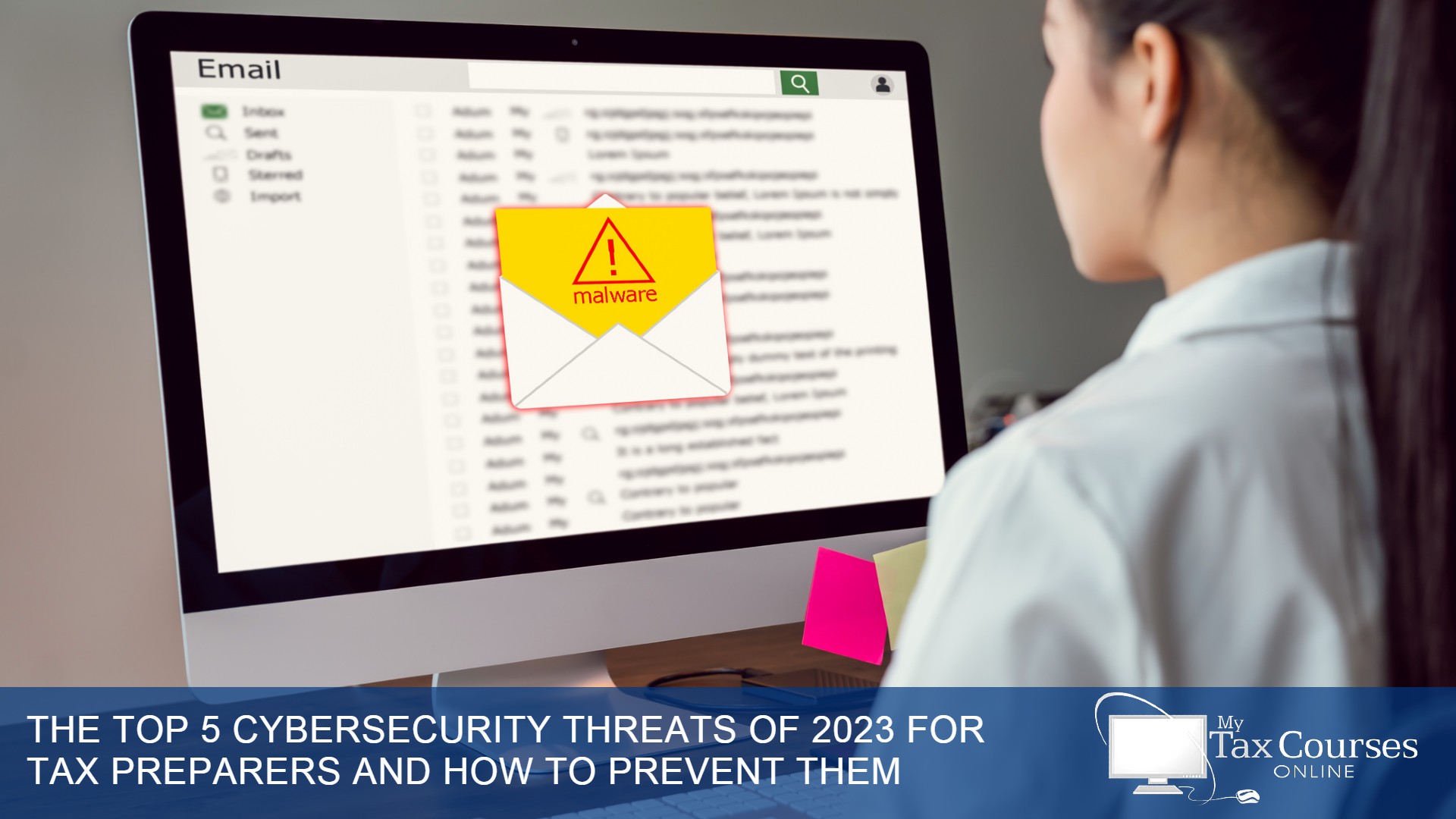Tax preparers are a prime target for cybercriminals because they access sensitive financial information. In 2023, you should be aware of the following five top cybersecurity threats and take steps to prevent them:
- Ransomware Attacks
Ransomware attacks are one of the most common and costly cybersecurity threats. In a ransomware attack, cybercriminals encrypt a victim's data and demand a ransom payment in exchange for the decryption key. Ransomware attacks can be devastating for tax preparers, leading to the loss of sensitive client data and significant financial losses.
How to Prevent Ransomware Attacks:
- Phishing and Social Engineering Attacks
Phishing and social engineering attacks are another common way cybercriminals target tax preparers. In a phishing attack, cybercriminals send emails or text messages that appear to be from a legitimate source, such as the IRS or a tax preparation software company. The emails or text messages often contain a malicious link or attachment that, when clicked, installs malware on the victim's computer. Social engineering attacks use human interaction to trick victims into revealing sensitive information. For example, a cybercriminal might call a tax preparer and pose as an IRS agent, demanding the victim's Social Security number or other personal information.
How to Prevent Phishing and Social Engineering Attacks:
- Credential Stuffing Attacks
Credential stuffing attacks involve cybercriminals using stolen usernames and passwords from one breach to access accounts on various platforms. Tax preparers are a prime target for credential stuffing attacks, as they often have access to sensitive client data.
How to Prevent Credential Stuffing Attacks:
- Use strong passwords and enable two-factor authentication for all online accounts.
- Change your passwords regularly.
- Be careful about what websites you enter your login information on.
- Insider Threats
Insider threats can also pose a significant risk to tax preparers. Insider threats can be intentional or unintentional. Intentional insider threats occur when an employee or contractor misuses their access to sensitive information for malicious purposes. Unintentional insider threats can occur when an employee or contractor makes a mistake, such as clicking on a malicious link or attachment.
How to Prevent Insider Threats:
- Implement strong security policies and procedures.
- Conduct regular security awareness training for employees.
- Monitor employee activity for suspicious behavior.
- IoT Vulnerabilities
The increasing use of Internet of Things (IoT) devices in tax preparation firms is another area of concern. IoT devices often need to be properly secured, which can create entry points for cybercriminals.
How to Prevent IoT Vulnerabilities:
By being aware of the top cybersecurity threats and mitigating these risks, you can help protect your clients and your businesses.








